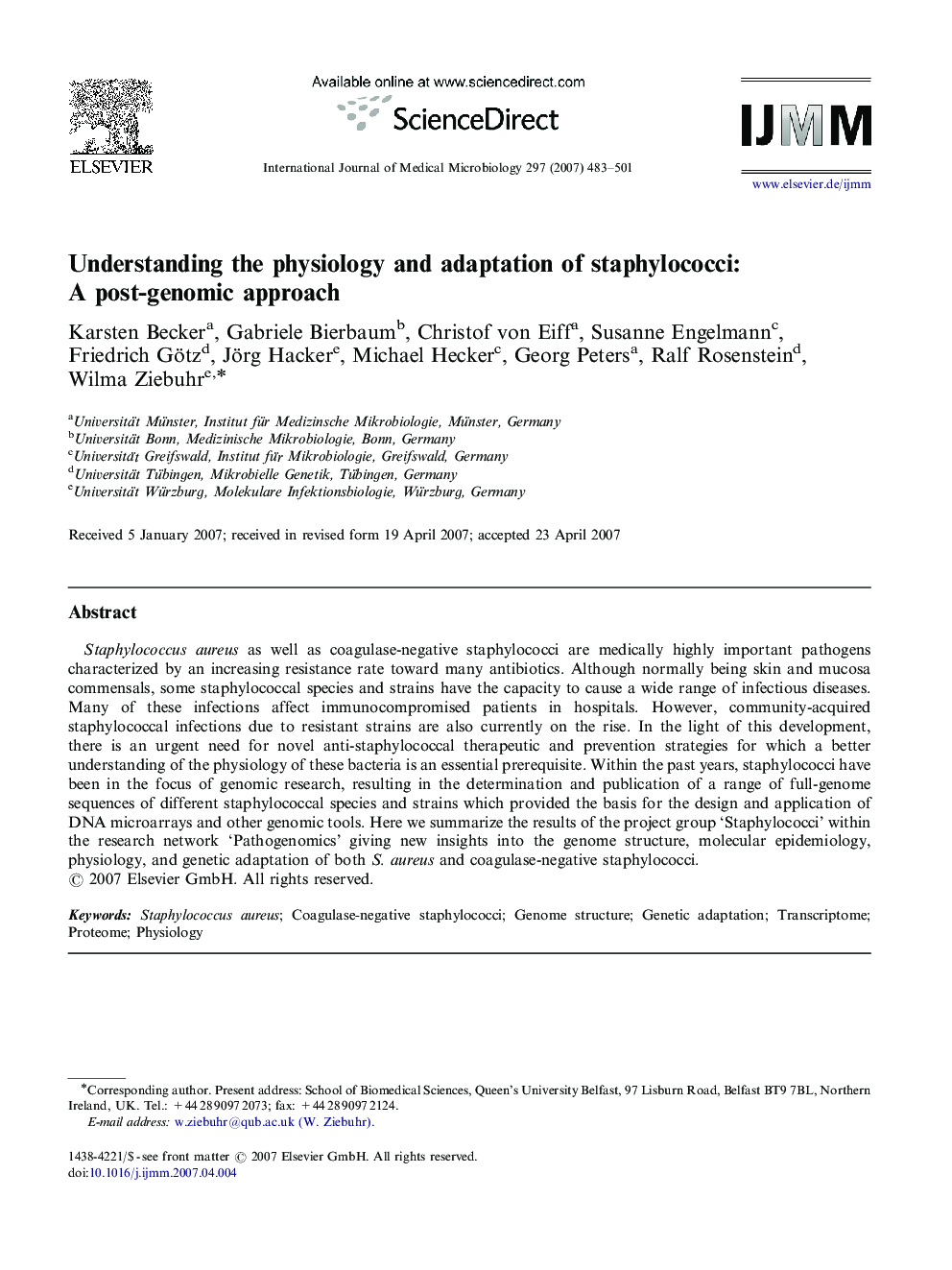| Article ID | Journal | Published Year | Pages | File Type |
|---|---|---|---|---|
| 2054504 | International Journal of Medical Microbiology | 2007 | 19 Pages |
Staphylococcus aureus as well as coagulase-negative staphylococci are medically highly important pathogens characterized by an increasing resistance rate toward many antibiotics. Although normally being skin and mucosa commensals, some staphylococcal species and strains have the capacity to cause a wide range of infectious diseases. Many of these infections affect immunocompromised patients in hospitals. However, community-acquired staphylococcal infections due to resistant strains are also currently on the rise. In the light of this development, there is an urgent need for novel anti-staphylococcal therapeutic and prevention strategies for which a better understanding of the physiology of these bacteria is an essential prerequisite. Within the past years, staphylococci have been in the focus of genomic research, resulting in the determination and publication of a range of full-genome sequences of different staphylococcal species and strains which provided the basis for the design and application of DNA microarrays and other genomic tools. Here we summarize the results of the project group ‘Staphylococci’ within the research network ‘Pathogenomics’ giving new insights into the genome structure, molecular epidemiology, physiology, and genetic adaptation of both S. aureus and coagulase-negative staphylococci.
